Barring disaster or distraction, I plan to move the sheep off the farm on Thursday to start their first extramural grazing tour, and much of the recent farm work has been aimed at getting animals and equipment ready for the move. I’m hoping at some point in the relatively near future this will seem like a routine part of running the farm, but at the moment I’m consumed with details to remember and failure points to avoid.
One of today’s projects was getting a dose of deworming medication into all the sheep that will be leaving. The fields I’ll be grazing have not seen sheep in many years, so they are presumably free of sheep-specific intestinal parasites; I’m doing my best to keep them that way. By treating 2 days before the move, the sheep should be quite clean when they land at the new field. I’ll write more in the future about sheep and parasite management — there are scads of scholarly articles devoted to it! — but the condensed story is that sheep pass parasite eggs in their poop, the eggs hatch into larvae, the larvae climb blades of grass, get consumed by sheep, and the cycle goes on. If the story of raising sheep is turning grass into lambchops, the meta-story is all about strategies for managing parasites.
So once again, Cass and I rounded up the flock and convinced them that they wanted to go into the handling system. If I were a better shepherd, I would run them through the system and do nothing but feed them some corn a couple of times a week; instead I only use the system when there’s poking and prodding to do, so they’re developing a rational reluctance to go in. Luckily, Cass is becoming more persuasive as she gains experience. I managed to get a few more photos of the whole endeavor this time as well.
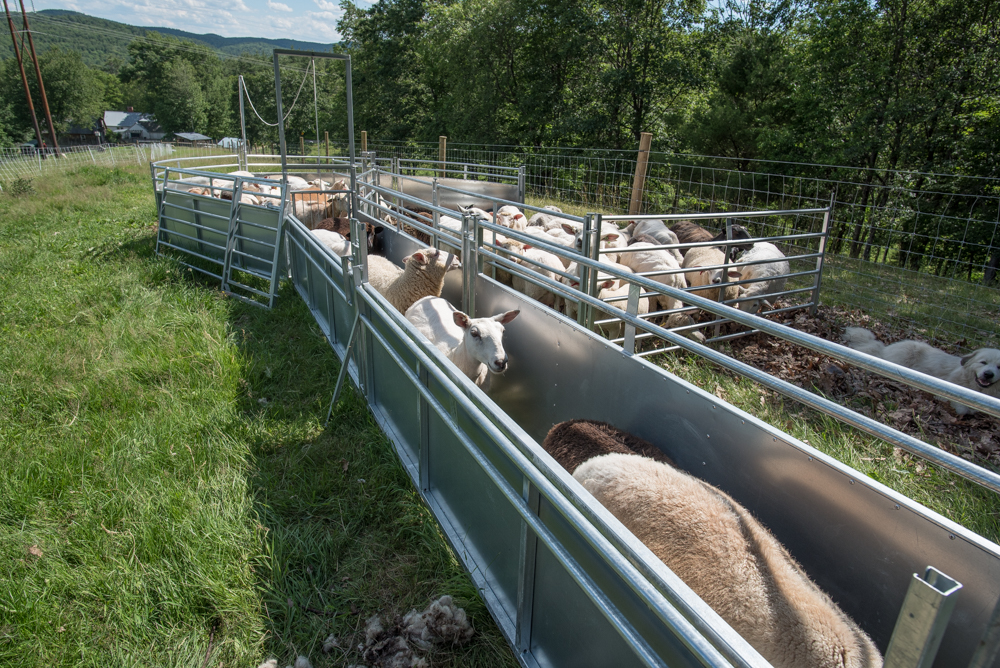
The sheep enter on the far side, and make a U-turn in the big circular area. There’s a rope-activated guillotine gate to control their flow into the raceway. Here’s view from the other side, with Cass applying persuasion.
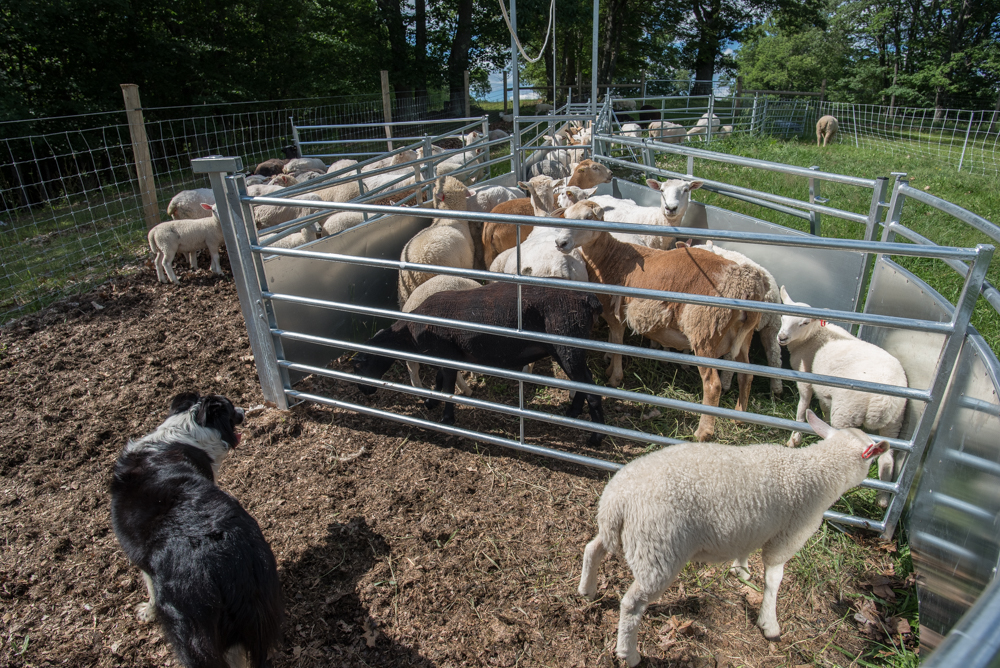 The sheep in the raceway can see the green grass beyond the sorting gate, which helps encourage them through (though some pushing is also involved).
The sheep in the raceway can see the green grass beyond the sorting gate, which helps encourage them through (though some pushing is also involved).
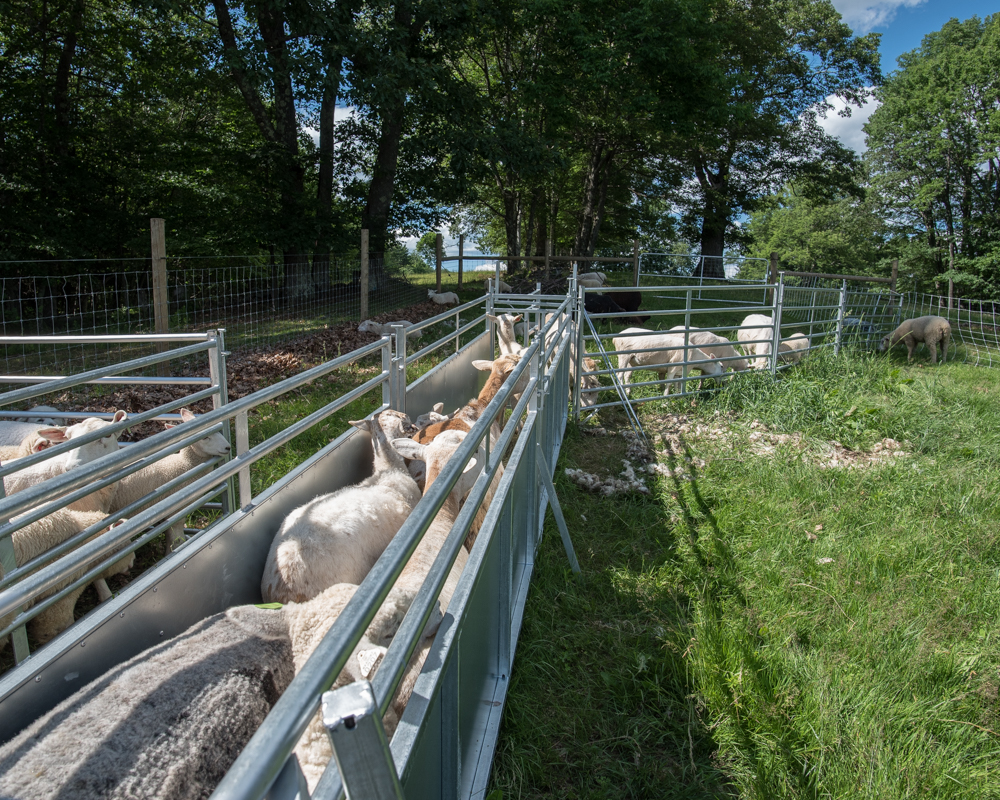 The raceway has fold-down sides (they’re down in the first image) that make it easier for me to climb in and out — I can only really control the sheep if I’m in with them, often straddling their backs. The catch is that the lowered sides make it possible for more athletic and adventurous sheep to jump out if I’m not careful. This guy, one of the winter lambs, thought he could escape, but Cass helped me catch him and dose him.
The raceway has fold-down sides (they’re down in the first image) that make it easier for me to climb in and out — I can only really control the sheep if I’m in with them, often straddling their backs. The catch is that the lowered sides make it possible for more athletic and adventurous sheep to jump out if I’m not careful. This guy, one of the winter lambs, thought he could escape, but Cass helped me catch him and dose him.
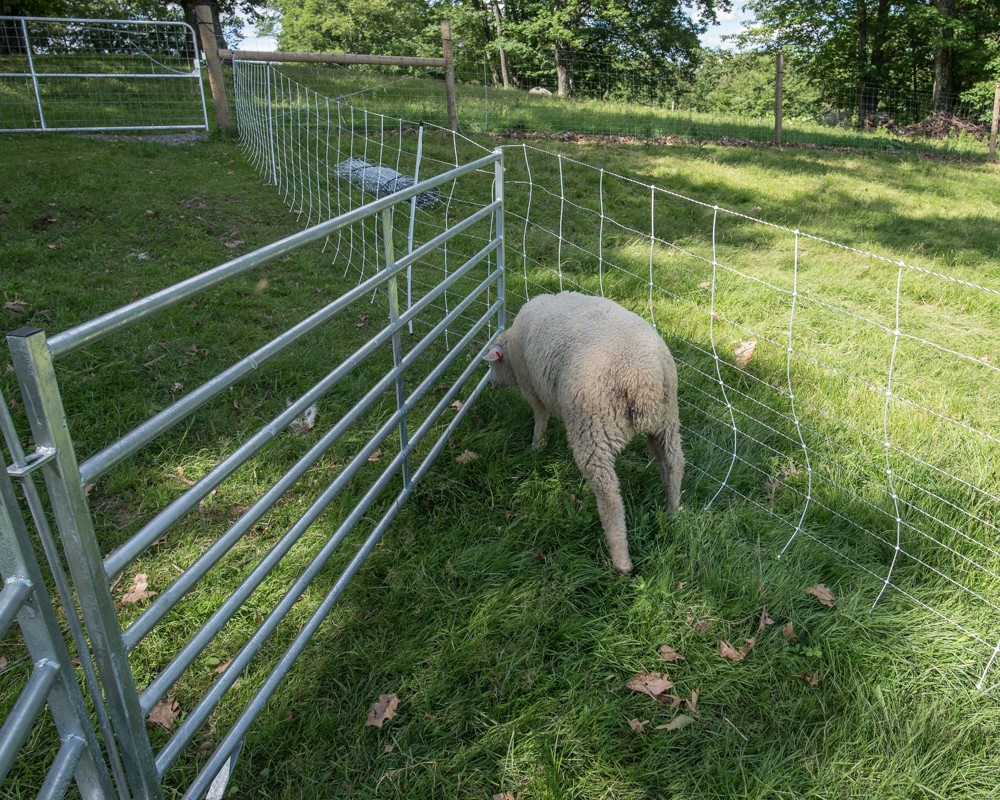 The actual administration of the deworming medication happens with a device called a drench gun. The long metal tip goes into the animal’s mouth and I squirt in the required dose. The device I have automatically draws from a reservoir and delivers a metered quantity with each pull of the handle.
The actual administration of the deworming medication happens with a device called a drench gun. The long metal tip goes into the animal’s mouth and I squirt in the required dose. The device I have automatically draws from a reservoir and delivers a metered quantity with each pull of the handle.
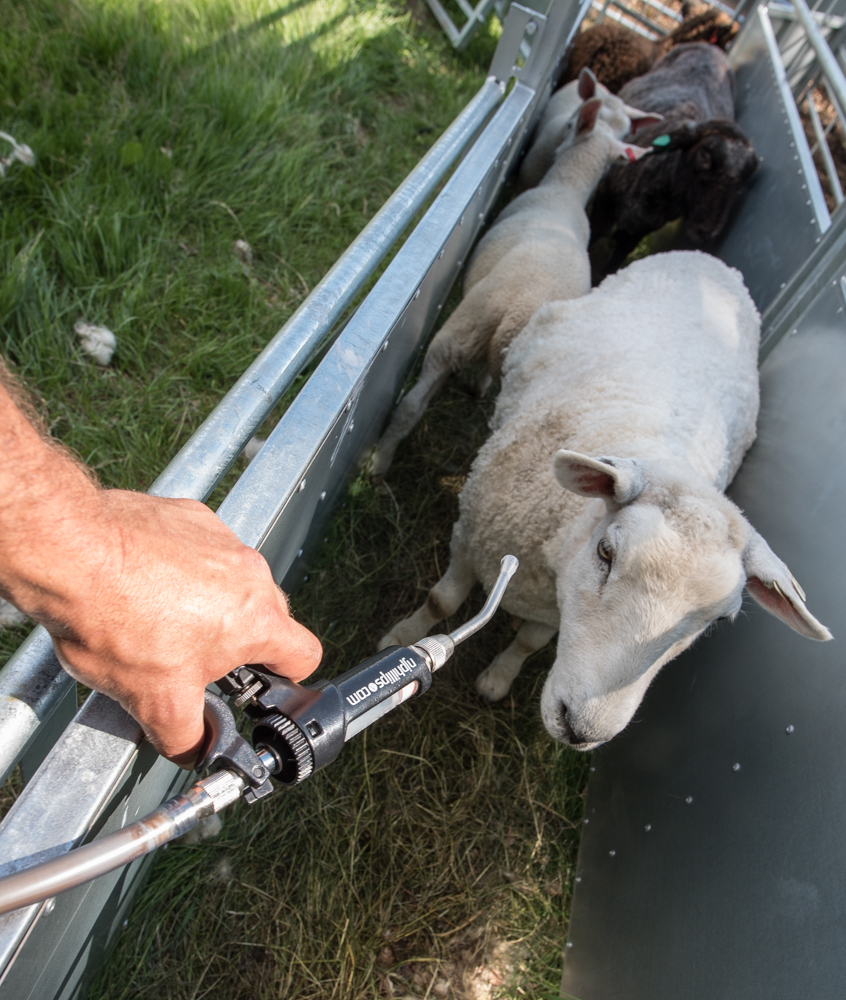
In this case, the dose was set so that one squirt was appropriate for the spring lambs, 2 squirts for the winter lambs and smaller ewes, and 3 for the bigger gals; I was trying my best to remember the list of weights I compiled on Saturday.
Tomorrow’s project is to fix the leaky brake line on the trailer-pulling truck, and Thursday is showtime. TBC!
Tagged: Cass, D-S Livestock Equipment, deworming, drench, ewes, handling system, intestinal parasites, lambs, parasites, sheep, Valbazen